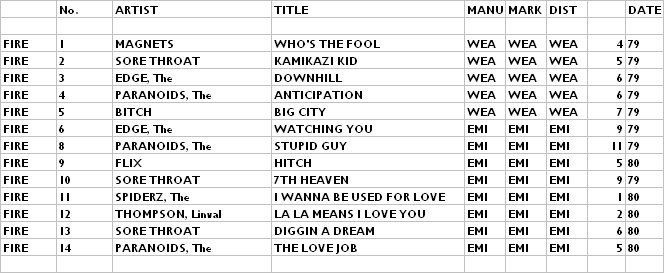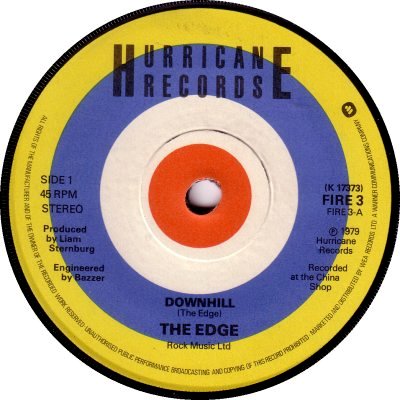
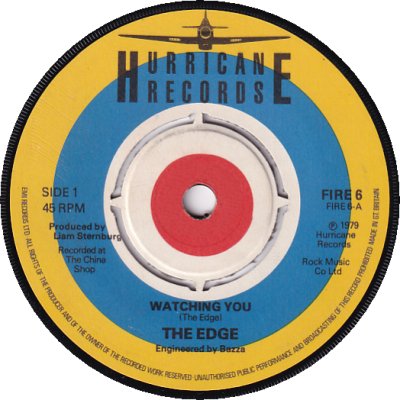
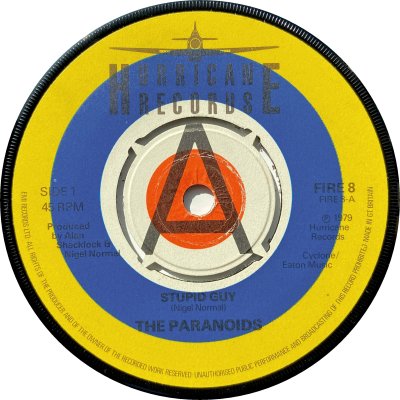
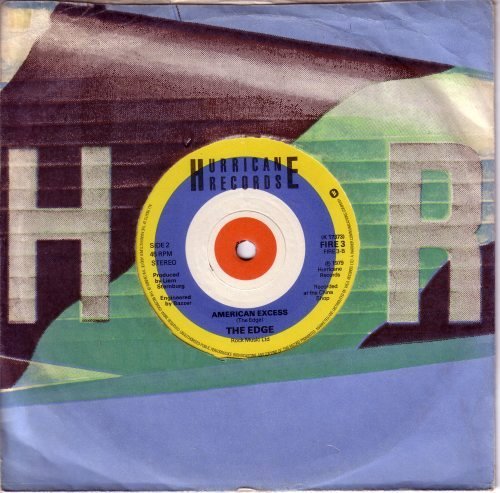
Hurricane seems to have been basically a New Wave concern, though FIRE-12 was a Reggae single, 'La La Means I Love You' b/w 'There Must Be A Girl' by Linval Thompson. 'Music Week' of the 24th of March 1979 reported that the label had been set up by Phil Preskey, who had previously managed the RAK label at EMI, and that it was operating out of an office at Damont (q.v.), where his father Monty was managing director - Monty Presky was also a director of Hurricane, but according to 'MW' he had nothing to do with the artistic side of the company. Logically enough the reverse of the company sleeve refers to the label as Hurricane (Damont). The article added that a long-term licensing deal had been signed with WEA - by that time WEA had acquired a majority shareholding in Damont.
In the event the licensing deal with WEA appears not to have been satisfactory, as it lasted for a mere six months. 'MW' of the 29th of September 1979 broke the news that Hurricane had taken off from WEA and landed at EMI, again with a licensing deal. The move turned out to be a victim of unfortunate timing: Hurricane was taken under the wing of EMI's Licensed Repertoire Division, but in January 1980 that division was closed down and responsibility for Hurricane and several other licensed labels was given to Liberty-United ('MW', 26th January 1980). Considerable confusion resulted, and none of the labels involved seem to have been happy with the new arrangement. It certainly doesn't seem to have suited Hurricane, for 'MW' of the 28th of June 1980 stated that Phil Presky had severed his company's ties with Liberty-United and was intending to continue as an independent, through distributors Spartan (q.v.) - Presky is quoted as saying "My only regret is that we did not go for this option from the start". Sadly there's no trace of independent Hurricanes; it looks as though the Spartan deal fell through and that Hurricane was permanently grounded.
Hurricane released thirteen singles during the years 1979-80, none of which charted. They were numbered in a FIRE-0 series, which was unaffected by the move from WEA to EMI. The label design remained basically unchanged at the time of the move, except that the logo gained an aeroplane and the reference to WEA on the perimeter text at 9 o'clock was replaced by one to EMI at nine o'clock (2). As can be seen, the company sleeve was cleverly designed to complement the label, but for better or worse the majority of singles came in picture covers. Demo copies were only given a special marking - a large central black 'A' - during the EMI period (3); thanks to John Timmis for that scan.
